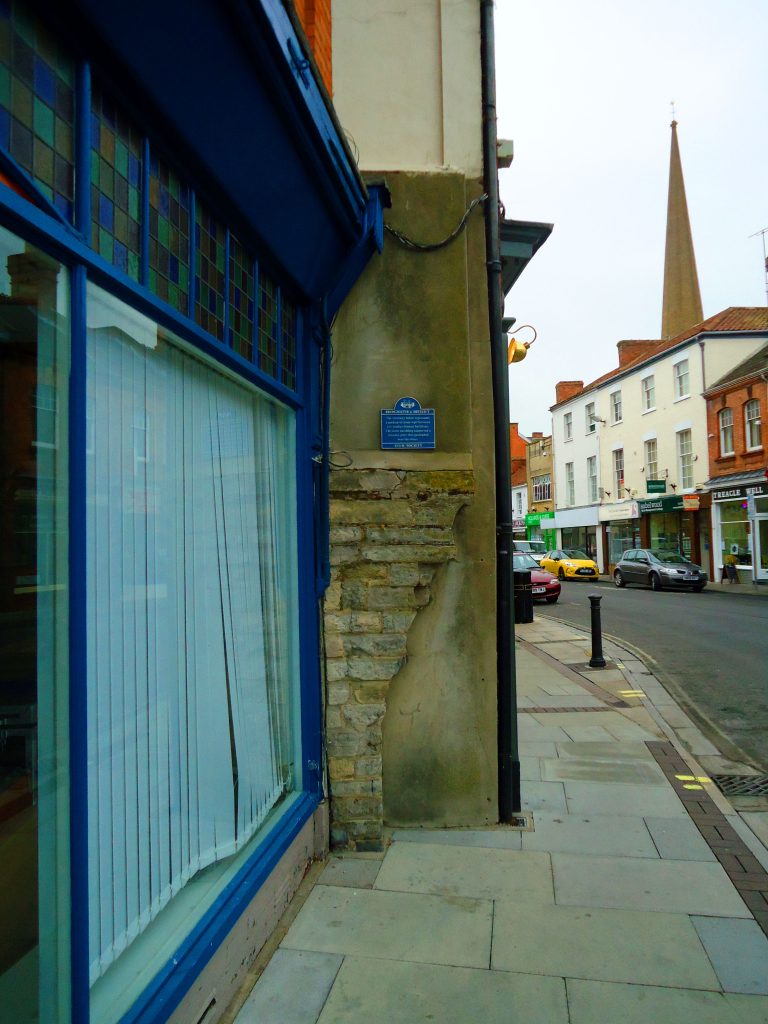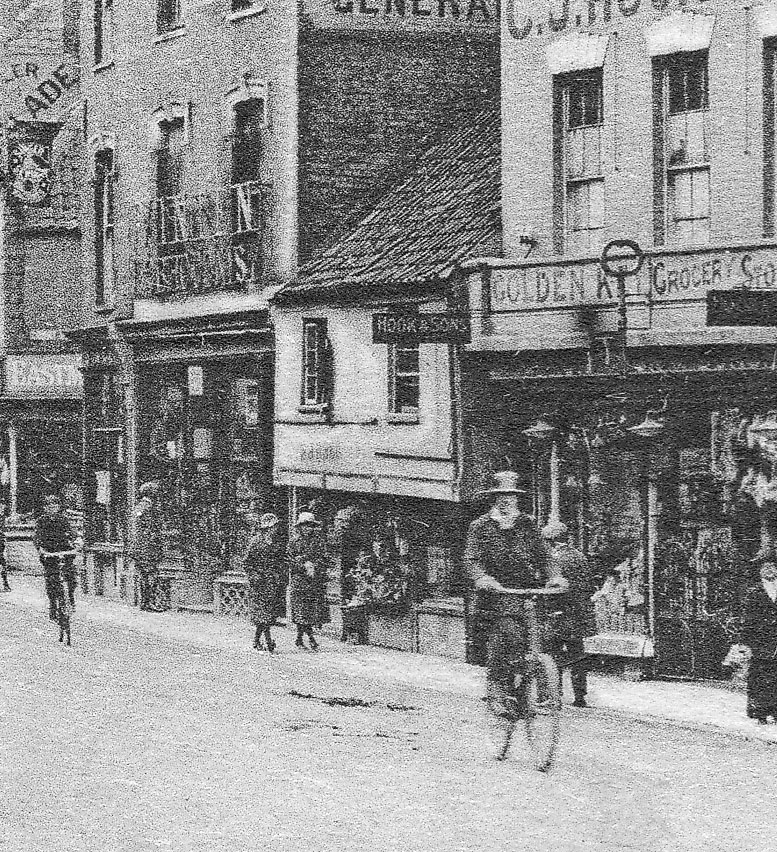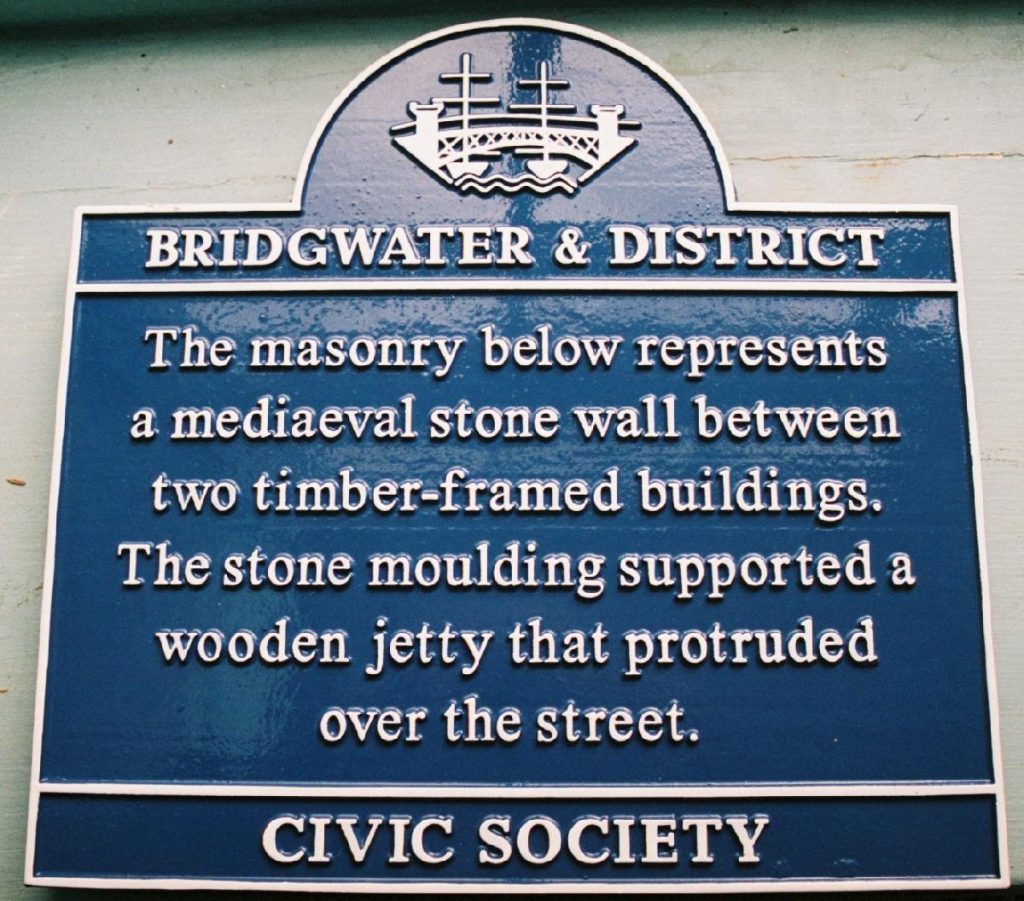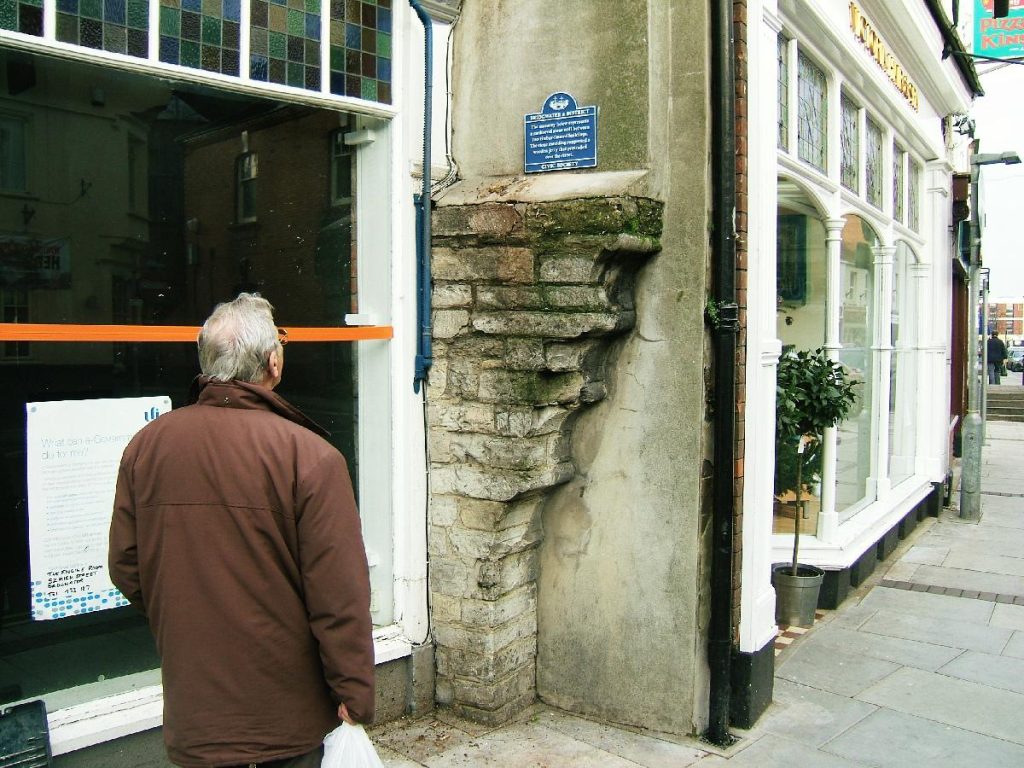
The High Street medieval masonry fragment is squeezed between two Victorian buildings. This represents the supporting wall of a half-timbered medieval house. Some idea of how this would have looked is suggested on the Marycourt house in St. Mary Street.

The fragment is built of blue lias stone which comes from the Polden Hills. In town you will also see a pinkie red stone from Wembdon and a golden yellow stone from Ham Hill, all three of which can be seen on St. Mary’s Church. There are many fragments of medieval houses that survive in Bridgwater; a timber hall was recently found in the Mayor’s Parlour of the Town Hall and a beautifully carved timber ceiling from another house in St. Mary Street can be seen in the Burrell Collection in Glasgow.
Bridgwater was a largely planned town; the streets were laid out to fit the high ground, which was then surrounded by marshes. Once the streets were designed the land in between was divided into plots of land to build houses; these were called burgage plots and they largely survive to this day. Although the buildings have been modernised, the plots themselves are much, much older.
Nearby is the Town Hall. The current building was opened in 1865 and it replaced a collection of older buildings from different periods. The High Street, from the Town Hall to the Cornhill, was once divided in two by a row of buildings called the Island. The North side of this was called the Shambles as it was home to a series of butchers.


